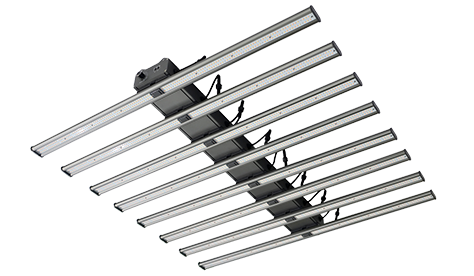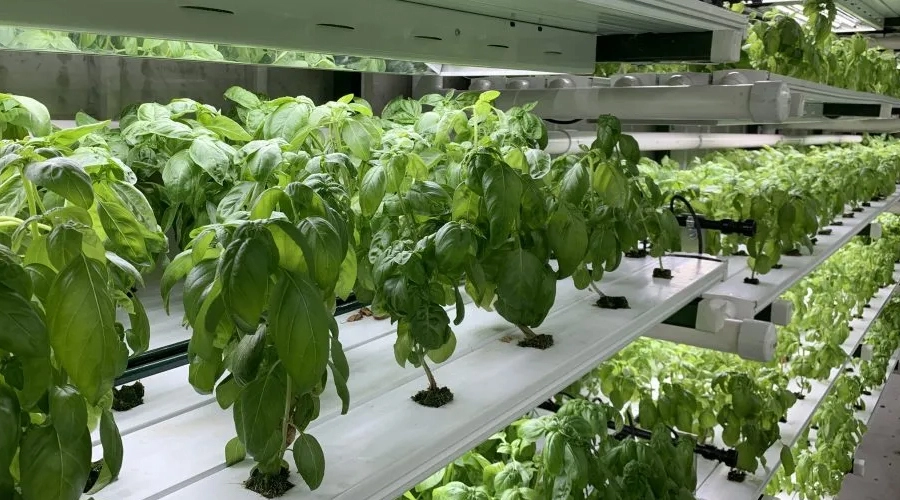Träumen Sie von saftigen Tomaten voller Geschmack, im Sonnenlicht tanzenden Kräutern und einer persönlichen Oase voller selbst angebauter Köstlichkeiten.
Der Aufbau Ihres Hydrokultursystems ist nicht nur etwas für erfahrene Heimwerker. Mit ein wenig Anleitung und der richtigen Herangehensweise können sogar unerfahrene Botaniker ihr hydroponisches Paradies kultivieren.
Wir werden uns mit den beiden einsteigerfreundlichsten Hydrokultursystemen befassen – die Deep Water Culture (DWC) und das Ebbe-Flut-System.
Bevor wir beginnen: Wählen Sie Ihr System
Lassen Sie uns die beiden Systeme erkunden, die wir erstellen werden:
Deep Water Culture (DWC): In DWCPflanzenwurzeln baumeln in einer nährstoffreichen Lösung und werden dank einer Luftpumpe ständig mit Sauerstoff umspült. DWC ist einfach einzurichten und zu warten und eignet sich ideal für Blattgemüse und Kräuter.
Ebbe-Flut-System: Dieses System überflutet und entwässert das Wachstumsbeet regelmäßig und ahmt so den natürlichen Anstieg und Abfall der Gezeiten nach. Dadurch werden die Wurzeln mit Sauerstoff versorgt und die Ansammlung von Nährstoffen verhindert, wodurch es für eine breitere Palette von Pflanzen, einschließlich Obst und Gemüse, geeignet ist.
Aufbau Ihres DWC-Systems
Das DWC-System ist ein beliebtes und benutzerfreundliches Hydrokultursystem. Pflanzenwurzeln werden in sauerstoffhaltiges Wasser getaucht, sodass sie reichlich Wasser, Nährstoffe und Sauerstoff erhalten. Dieses System erfordert eine Luftpumpe und einen Ausströmerstein, um den Sauerstoffgehalt im Wasser aufrechtzuerhalten.
Materialien:
Luftstein
Luftpumpe
Ich kann nicht
Reservoir (z. B. eine Tragetasche oder ein Eimer)
Nährstofflösung (hydroponische Formel)
Messer zum Schneiden von Schaumstoffplattformen
Polystyrolschaum zur Verwendung als Floß
Wachstumsmedium (Steinwolle, Tonkiesel)
Timer (optional)
Schritte:
1. Bereiten Sie den Behälter vor: Bohren Sie Löcher in den Deckel für den Ausströmerstein und den Netztopf. Stellen Sie sicher, dass der Wasserstand die Pflanzenstängel nicht überschwemmt.
2. Nährlösung in das Reservoir injizieren: Konzentrat nach Herstellerangaben mischen und bis zu einer Tiefe von 30 Zentimetern oder tiefer auffüllen.
3. Ausströmerstein und Netztopf einsetzen: Den Ausströmerstein in Wasser tauchen und den Netztopf in den Löchern des Deckels befestigen.
4. Schneiden Sie Polystyrolschaum zu, um ein schwimmendes Floß zu erstellen, und platzieren Sie es etwa 3 Zentimeter unter der Oberseite des Behälters oder Reservoirs. Schneiden Sie mit ausreichendem Abstand Löcher in den Schaumstoff.
5. Injizieren Sie Wachstumsmedium in den Netztopf: Legen Sie die Pflanzenwurzeln vorsichtig in das Wachstumsmedium und halten Sie die Stängel über der Wasserlinie.
6. Stellen Sie die Pflanze in den Netztopf und stecken Sie den Netztopf dann in die Löcher in der Schaumstoffplattform. Der Netztopf ermöglicht das Wachstum der Pflanzenwurzeln vom Boden und von den Seiten und erleichtert so den Zugang zu Nährstoffen und Sauerstoff.
7. Schließen Sie die Luftpumpe und den Timer an (optional): Ein Timer ermöglicht automatische Nährstoffabgabezyklen.
Aufbau Ihres Ebbe-Flut-Systems
Das Ebbe-Flut-System ist technischer und komplexer, bietet aber auch eine größere Vielseitigkeit. Seine Funktion umfasst den periodischen Wasserzu- und -abfluss aus dem Reservoir, basierend auf den Bedürfnissen der Pflanze, dem Wachstumszyklus und sogar der Temperatur.
Beim Einströmvorgang fließt sauerstoffhaltiges Wasser durch das System und versorgt die Pflanzen mit Wasser und Nährstoffen. Wenn es abläuft, kehrt die Nährlösung im Wasser zur Wiederverwendung in das Reservoir zurück, sodass eine Pumpe zum Eintauchen und Entleeren der Wachstumsschale erforderlich ist.
Materialien:
Vorratsbehälter (Behälter, Eimer)
Pflanzbeet (Kunststoffbehälter,
PVC-Rohre)
Siphonglocke und Steigrohr
Pumpe und Timer
Wachstumsmedium (Tonkiesel, Perlit)
Netztöpfe und Deckel
Schritte:
1. Pflanzbeet anlegen: Am Boden des Behälters Löcher für die Entwässerung bohren. Wenn Sie PVC-Rohre verwenden, verbinden Sie diese mit Bögen und T-Stücken zu einem Gitter.
2. Installieren Sie die Siphonglocke und das Steigrohr: Platzieren Sie die Siphonglocke am Boden des Behälters, sodass das Steigrohr über den Wasserspiegel des Pflanzbeets hinausragt.
3. Pumpe und Zeitschaltuhr anschließen: Die Pumpe drückt die Nährlösung durch das Steigrohr nach oben und taucht das Pflanzbeet unter. Der Timer steuert den Zyklus des Flutens und Entleerens.
4. Füllen Sie das Pflanzbeet mit Wachstumsmedium und Netztöpfen: Befolgen Sie die Schritte zum Einrichten eines DWC-Systems und stellen Sie die Netztöpfe auf das Wachstumsmedium.
Pflege Ihres Hydroponiksystems
Überwachen Sie den Nährstoffgehalt und den pH-Wert: Testen Sie Ihre Lösung regelmäßig und passen Sie sie an, um ein optimales Pflanzenwachstum zu gewährleisten.
Halten Sie das System sauber: Ersetzen Sie die Nährlösung regelmäßig und wischen Sie die Ausrüstung ab, um Algenwachstum zu verhindern.
Beschneiden Sie Ihre Pflanzen: Regelmäßiges Beschneiden fördert ein gesundes Wachstum und beugt einer Überfüllung vor.
Kaufen vs. Bauen
Ehrlich gesagt ist nicht jeder ein Heimwerker. Während der Aufbau Ihres Hydroponiksystems eine lohnende Erfahrung sein kann, die ein Gefühl von Erfolg und Personalisierung mit sich bringt, erfordert er auch Zeit, technische Fähigkeiten und genügend Geduld, um Probleme zu beheben.
Für viele Liebhaber eines umweltfreundlicheren Lebens kann der Druck von Elektrowerkzeugen und PVC-Rohren schnell dazu führen, dass der Traum von selbst angebauten frischen Produkten verblasst. Warum nicht ein bestehendes Hydrokultursystem kaufen, anstatt Material einzukaufen und zu bauen?
Alles, was Sie brauchen, wird ordentlich verpackt, beschriftet und mit klaren Anweisungen geliefert, sodass es auch für jemanden verständlich ist, der zum ersten Mal Pflanzen pflegt. Sie müssen keine kryptischen Schaltpläne entschlüsseln oder jede Verbindung erraten.
Verabschieden Sie sich von den Frustrationen von DIY-Projekten und undichten Verbindungen. Stattdessen können Sie im Handumdrehen knackigen Salat oder saftige Kirschtomaten genießen.
Die Hydrokultursysteme von Auxgrow sind in der Regel auf Modularität ausgelegt. Sie können einen weiteren Pflanzturm oder einen weiteren Anbauschrank hinzufügen oder Komponenten austauschen, wenn Ihr grüner Daumen wächst.
Von Desktop-Kräuterparadiesen bis hin zu vertikalen Gemüselandschaften bieten wir Lösungen für verschiedene Räume und unterschiedliche Bedürfnisse. Wenn Sie an unseren Hydrokultursystemen interessiert sind, kontaktieren Sie uns bitte für detaillierte Informationen.



Bonus-Tipps
Beginnen Sie klein mit einer oder zwei Pflanzen, um Erfahrungen zu sammeln, bevor Sie Ihr Hydrokultursystem erweitern.
Informieren Sie sich über die spezifischen Bedürfnisse der Pflanzen, die Sie anbauen möchten.
Treten Sie Online-Hydrokultur-Communitys bei, um Unterstützung und Rat zu erhalten.
Jayes
Als Digital Marketing Manager bei AUXGROW vereint Jayes eine Leidenschaft für Hydrokultursysteme mit Fachwissen für LED-Wachstumslampen. Mit praktischer Erfahrung und einem tiefen Verständnis führt Jayes Sie durch die Welt des nachhaltigen Anbaus.






